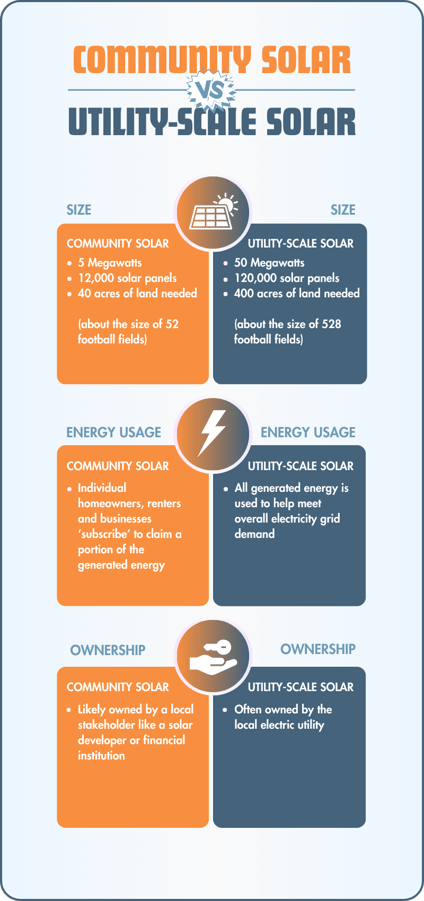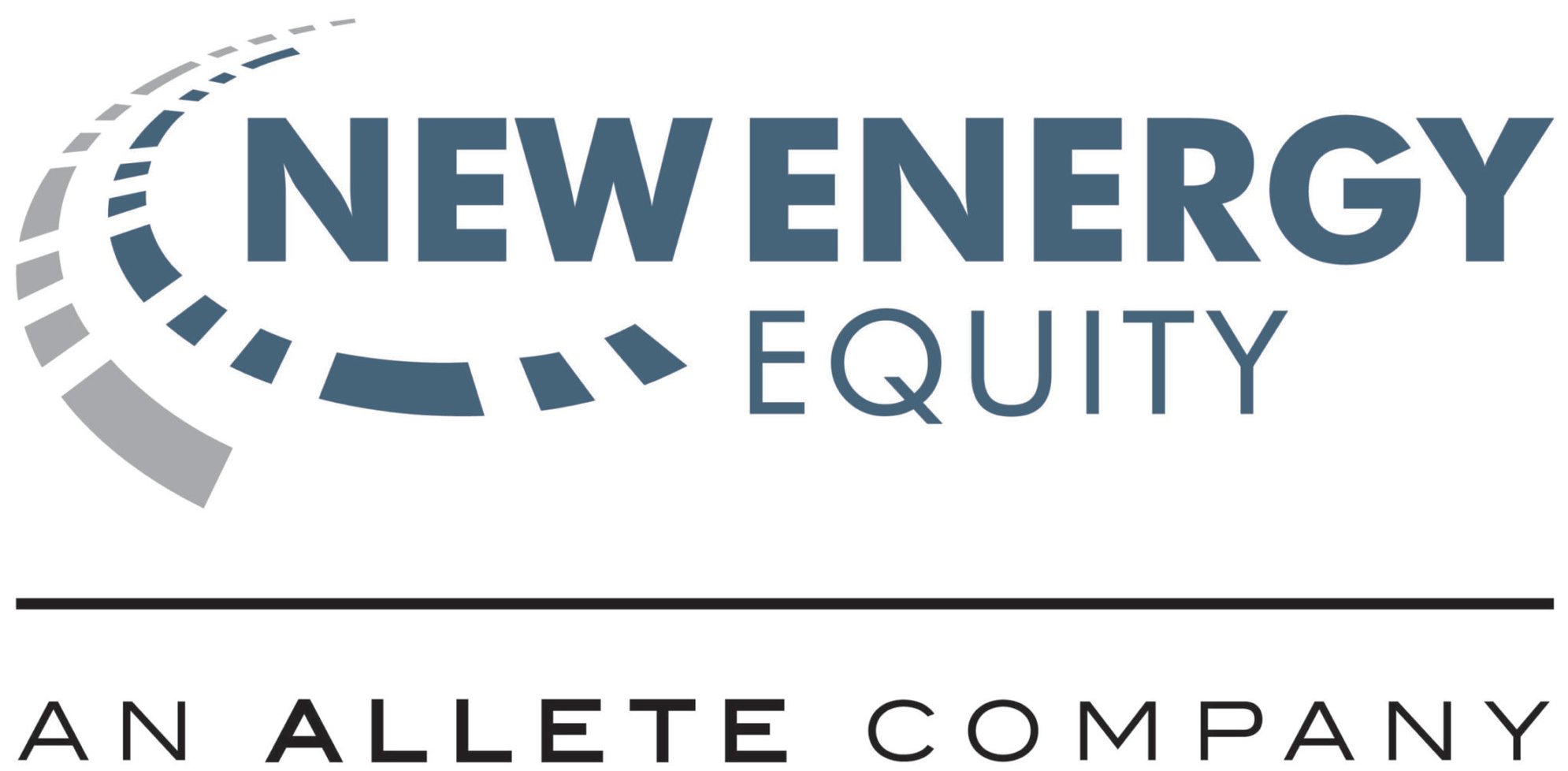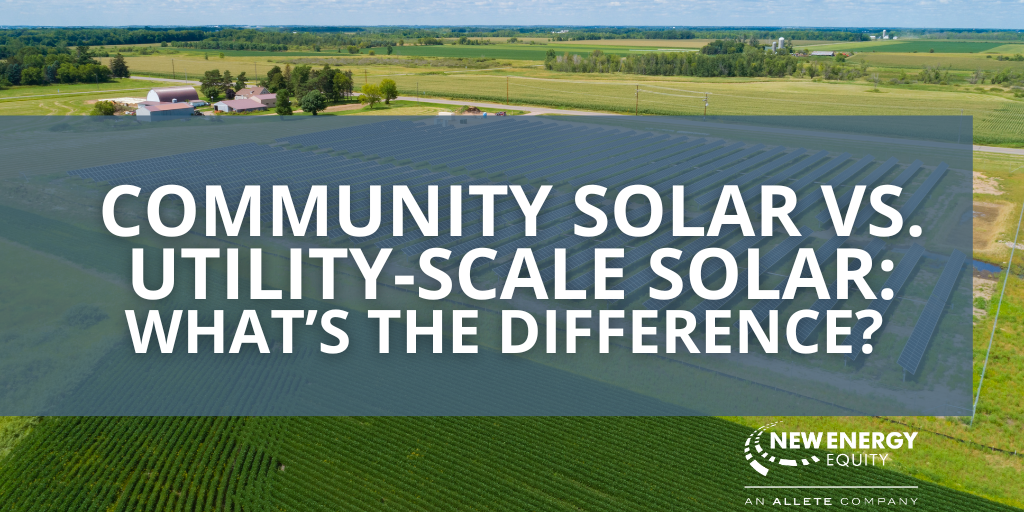New Energy Insights
- Home /
- New Energy Insights /
- Community Solar Vs. Utility-Scale Solar: What's the Difference?
Solar energy has become a buzzword in recent years as communities look for cleaner, more sustainable ways to power our world. Solar comes in all shapes and sizes, but two common terms used are "community solar" and "utility-scale solar." What exactly do these terms mean and how do they differ? Let’s break it down.
What is Utility-Scale Solar?
Utility-scale solar is a term used to describe a large solar array (typically 5-50 Megawatts) that provides power directly to the electric grid. Unlike smaller solar projects that are designed to provide energy to an individual home or business, all the generated energy from a utility-scale solar project is sent to the electric grid to help meet overall demand.
Utility-scale projects are often owned by the electric utilities themselves. They are built to provide power to entire communities, not individual residents, which means that they are often substantially larger than other types of solar projects, both in the amount of energy produced and amount of land needed.
What is Community Solar?
Community solar is a model of solar development that allows homeowners, renters, and businesses to access the benefits of solar even if they are not able to build a solar project of their own. By participating in community solar, residents who do not own their property, lack room to install solar on their property, or have limited financial resources can “subscribe” to a share of a solar facility located elsewhere and receive savings each month on their electric bill. Community solar and utility-scale solar are similar in that the energy produced from both project types is fed directly back to the electric grid. However, community solar is unique in that for each unit of energy the project supplies to the grid, subscribers in the community receive a ‘bill credit’ calculated based on their portion of the energy produced, allowing them to save money.
Because community solar projects serve multiple community members, projects are typically 1-5MW in size: larger than a typical residential rooftop array, but smaller than most utility scale projects. Since these projects are significantly smaller than most utility scale projects, they provide many benefits to communities and the electric grid. For example, many sites with great potential for community solar development are located on the distribution grid very close to the electricity consumers. This benefits the grid because using electricity close to where it is produced helps avoid some of the transmission losses that can occur with utility scale projects, which typically must be sited much further away from electricity end users.
Key Differences
Community solar projects generally range from 1 to 5 Megawatts (MW) in size. Utility-Scale projects vary in size, but are usually much larger and can be upwards of 50MW. Let’s look at two sample projects and see how they compare.

Summary
For landowners interested in signing a solar land lease, the difference in size is the most important distinction between Community Solar and Utility-Scale solar. US Bank Stadium in Minneapolis, home to the state’s NFL team, sits on a 38 acre site, giving it a similar footprint to a Community Solar project. The 50MW utility-scale project we reviewed above is almost as large as the entire city-state of Monaco.
If you’re interested in learning more about hosting a community solar project or want to see if your land qualifies, reach out today!
Stay up-to-date with New Energy Equity by joining our mailing list.

